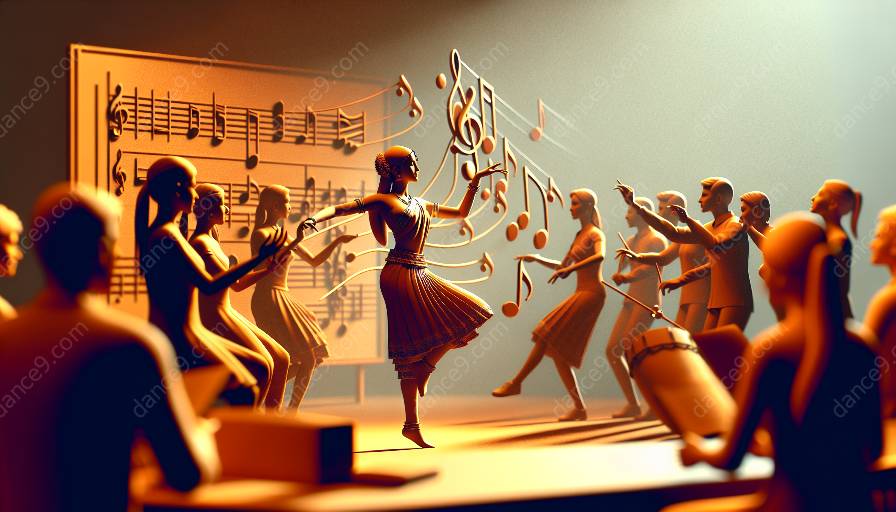The relationship between dance and music is a rich and intricate one, with music playing a vital role in enhancing dance performance. Understanding the physiological effects of music on dance performance not only sheds light on the science behind this relationship but also provides insights into the fascinating world of dance studies. Let's explore how music influences the physiological aspects of dance performance and how the two art forms interact to create compelling artistic expressions.
The Dance and Music Relationship
Dance and music have been intertwined since time immemorial, with each art form influencing and elevating the other. Music serves as the heartbeat of dance, providing rhythm, melody, and emotional depth to the movements of the dancers. In turn, dance brings music to life, visually interpreting its nuances and adding a physical dimension to its expression. The synergy between dance and music is evident in various dance forms, from ballet and contemporary dance to traditional folk dances around the world. This symbiotic relationship highlights the interconnectedness of the two art forms and their profound impact on each other.
Exploring Dance Studies
The study of dance encompasses various disciplines, including artistic, cultural, and scientific perspectives. Understanding the physiological effects of music on dance performance is a key area of interest in dance studies, as it delves into the intricate mechanisms through which music influences the human body and mind during dance. By exploring this relationship, dance studies can uncover new dimensions of artistic expression, performance enhancement, and the psychological and physical well-being of dancers. This interdisciplinary approach bridges the gap between art and science, offering a holistic understanding of dance as a deeply embodied form of expression.
Physiological Effects of Music on Dance Performance
The impact of music on dance performance goes beyond mere auditory enjoyment; it extends to the physiological responses of dancers. Music has the power to influence heart rate, breathing patterns, and overall physical coordination in dancers. The tempo, rhythm, and emotional content of music can elicit distinct physiological responses, affecting muscle tension, energy levels, and emotional states of the performers. Additionally, the neurological effects of music on the brain play a crucial role in synchronizing movement with auditory stimuli, enhancing motor skills, and fostering a sense of artistic flow within dancers.
Effects of Tempo and Rhythm
The tempo and rhythm of music are key determinants of physiological responses in dance performance. Upbeat, fast-paced music tends to increase heart rate, energize muscles, and prompt dynamic movements, leading to heightened physical exertion and performance intensity. Conversely, slower tempos and gentle rhythms can induce relaxation, fluidity, and expressive grace in dance, influencing the breathing patterns and overall physical presence of the dancers.
Emotional and Psychological Impact
Music also exerts a profound emotional and psychological impact on dancers, influencing their mental focus, emotional expression, and overall performance demeanor. The emotive qualities of music, such as mood, tonality, and expressive dynamics, can evoke a range of emotions in dancers, effectively shaping the narrative and aesthetic interpretation of their movements. This emotional resonance not only enhances the artistic depth of dance performances but also contributes to the psychological well-being and creative fulfillment of dancers.
Neurological Synchronization
From a neurological perspective, the synchronization of movement with music involves intricate cognitive processes that enhance motor coordination, sensorimotor integration, and temporal perception in dancers. The brain's response to musical stimuli fosters a sense of rhythmic precision, kinesthetic awareness, and spatial-temporal synchronization, thereby optimizing the alignment of movement with music. This neural synchronization underpins the seamless integration of music and dance, elevating the overall quality and expressiveness of the performance.
The Artistic Synergy
Ultimately, the physiological effects of music on dance performance underscore the profound interplay between art, science, and human expression. By illuminating the intricate relationship between music, dance, and the human body, we gain deeper insights into the transformative power of artistic collaboration. This synthesis of artistic synergy delves into the essence of creativity, embodied cognition, and the holistic experience of performers and audiences alike, shaping the cultural tapestry of dance and music.

















